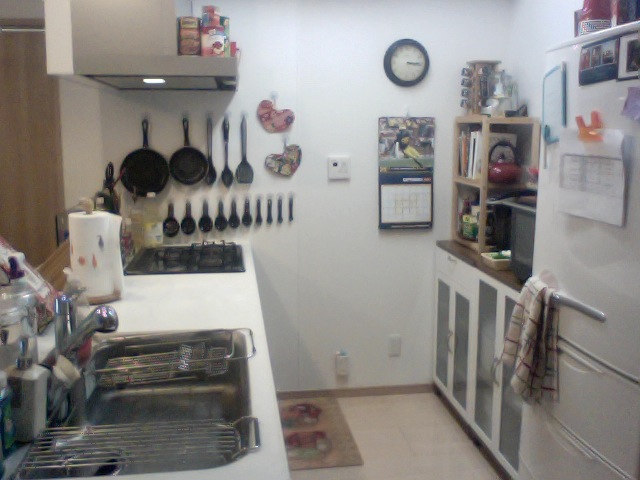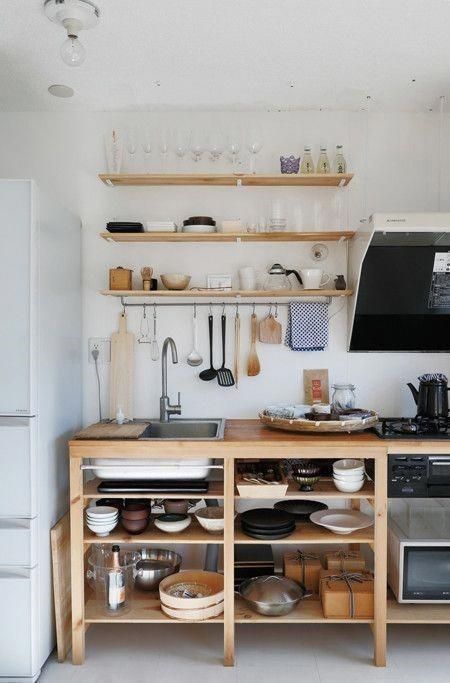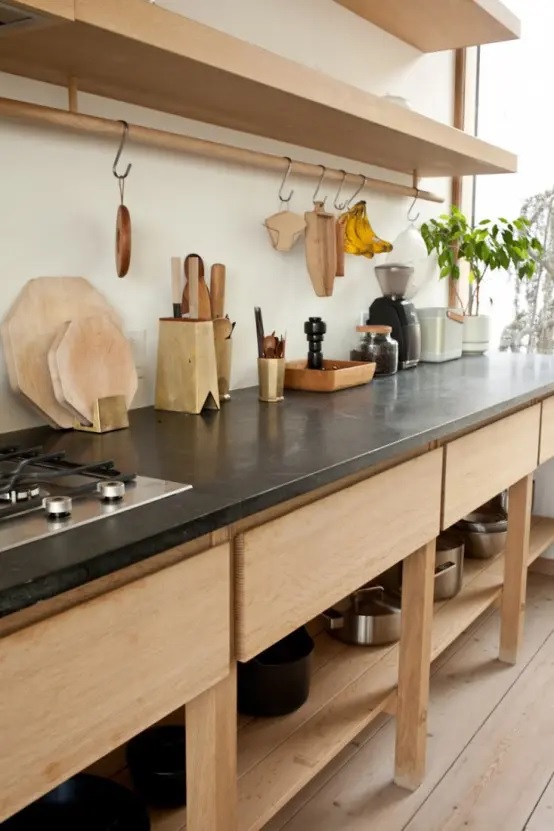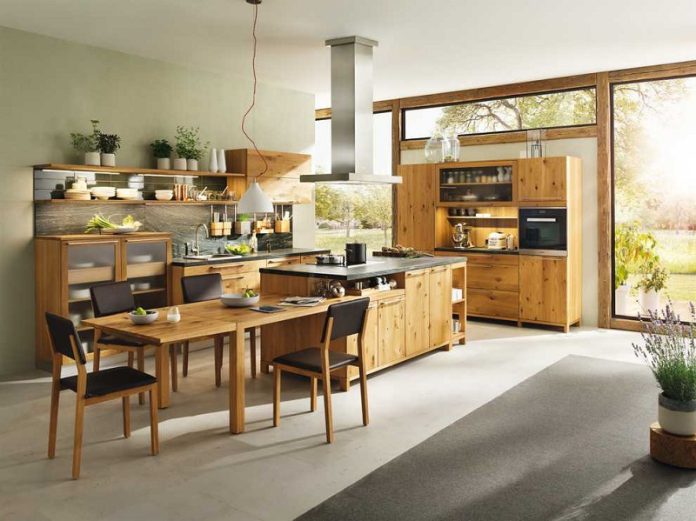Mencoret.com – There are some things you should know before setting up your own Japanese kitchen. For example, large ovens and dishwashers are not common in Japanese kitchens. Instead, many Japanese households rely on convection microwaves. It is uncommon to find dishwashers in apartments, though. You will find portable vacuum flasks used to carry tea and cold drinks from home. There are also a variety of other items you should keep in mind when setting up a Japanese kitchen, such as folding tables.
Easy Storage Solution for Japanese Kitchen
Fortunately, there are many easy-to-use storage solutions for a Japanese kitchen. Most Japanese kitchens have open shelves. One or two floating shelves adorn one wall. Near the open shelves, a magnetic strip holds chopping and carving knives. Other than that, open shelves are completely free of clutter. Suspended racks are another modern option for organizing your kitchen. They are too high for practical storage but can be filled with plants and less-used items.
One great way to decorate a small Japanese kitchen is to incorporate decorative items from Japan into the space. For instance, you could use traditional Japanese pottery for the cabinet and countertop. You can also choose unusual materials for your countertops, such as porcelain or natural stone. You should make sure that the countertop matches the rest of your Japanese interior design, including your flooring. This will create a calming atmosphere. When you’re finished, use some decorative items to accent the space.

A small Japanese kitchen is usually narrow, which makes it difficult for foreigners to work in it. It will have a small sink, but a two burner countertop cooktop and two rings may suffice. The kitchen is not nearly as big as an average western kitchen, and many Japanese don’t cook much. Instead, they use the rice cooker. They don’t have the space for a big oven, but a small Japanese kitchen is ideal for a family of six to ten people.
Simple Japanese Small Kitchen Design
If you have limited space, a petite knife can be a great option. This Japanese kitchen knife is ideal for chopping up vegetables, working with small ingredients, and making fine cuts. Although Akira uses different types of knives, he finds that a sturdy santoku knife and a small petty knife are enough to prepare almost any Japanese dish. Several of these are available at Japan House London.
A small Japanese kitchen was much smaller than an equivalent European kitchen. A typical European kitchen was 1.9 m long and 3.4 m wide, which is about 6.46 square meters. The Japanese kitchen, on the other hand, was smaller, measuring just 1 tsubo, which is about 3.3 square metres. These kitchens had a tatami mat and a small dining table. In addition to the cooking space, there was a separate room that contained a water sink and a traditional sink.
 One of the most important considerations for any Japanese kitchen is its food preparation. Japanese cuisine emphasizes the seasonality of its ingredients, with dishes created to herald the arrival of each calendar month or season. Many traditional dishes are low in red meat and fats. In addition, sake is a rice beverage that tends to be high in salt. However, there are low-salt versions of both. This should be a top priority when setting up your small Japanese kitchen.
One of the most important considerations for any Japanese kitchen is its food preparation. Japanese cuisine emphasizes the seasonality of its ingredients, with dishes created to herald the arrival of each calendar month or season. Many traditional dishes are low in red meat and fats. In addition, sake is a rice beverage that tends to be high in salt. However, there are low-salt versions of both. This should be a top priority when setting up your small Japanese kitchen.
Adding to a Great Tool Collection in a Small Kitchen
If you are unfamiliar with the Japanese cooking style, a meat cleaver is a great tool to add to your collection. It resembles a rectangular hatchet, but it is not common in traditional Japanese kitchens. In the western world, the meat cleaver functions much like a kitchen knife. However, it is used for breaking up large soft bones or cutting through thick, tough meat. Unlike a kitchen knife, a cleaver is usually made of softer steel so that it does not break easily.
For those of you who are curious about the small Japanese kitchen, it can help to watch videos on YouTube that replicate authentic dishes on a small scale. Many of these videos use tiny kitchen tools to recreate the authentic Japanese dishes on a micro-scale. A typical Sanwa kitchen is an example of micro-living. It includes a sink, a stovetop, and a small storage space. Ultimately, it is about maximizing the space in your kitchen and making it the most functional and pleasant place to be.

As an example, in a traditional Japanese kitchen, it is common to find a variety of knives, each serving a specific purpose. For a smaller Japanese kitchen, there may be only one, while a larger residence will often have many. Regardless, these knives are useful for a wide variety of cooking situations, and are extremely versatile. They are also resistant to rust and are often made of synthetic rubber.










